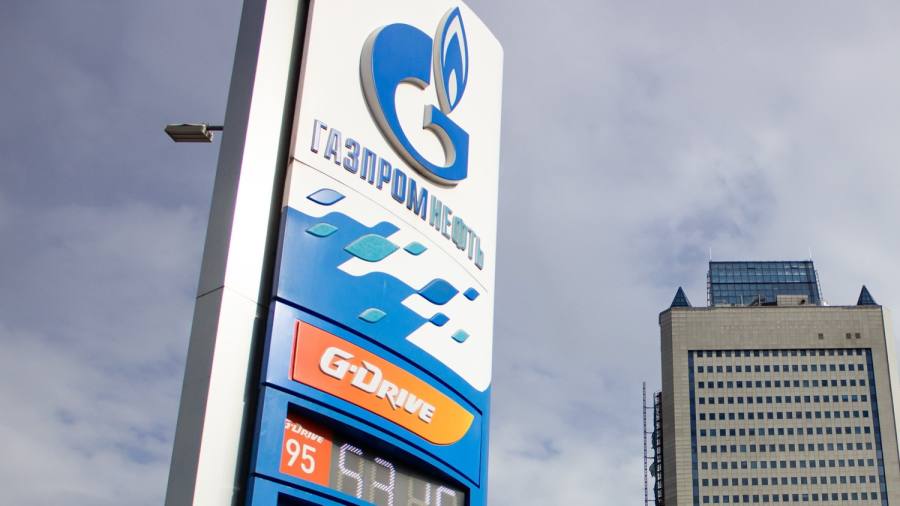When G7 leaders prepared to implement a price cap on Russian oil last summer, some industry veterans cast doubt on whether the complex system would work. A year later, western officials believe they have largely been proven right: the Kremlin’s revenues are down but its oil is still flowing.
The price cap on Russian crude and refined petroleum products was engineered by the US in response to a planned EU ban on European companies providing shipping, or other maritime services, to Russian oil cargoes.
By permitting those companies to continue to service Russian cargoes if the oil is sold at a discount, Washington hoped to curtail the Kremlin’s revenue while ensuring Russian exports continued — to protect a global economy struggling with high energy costs.
US officials felt they had “silenced the sceptics” by keeping Russian oil flowing, says Helima Croft, a former CIA analyst and now head of commodities research at RBC Capital Markets.
“If we had never had the services ban, we never would have had price caps,” Croft explains. “The goal was to keep the molecules on the market.”
Russian oil exports in April reached 8.3mn barrels a day, the highest since April 2020, driven in large part by China and India, which imported, respectively, 2.1mn b/d and 2mn b/d of Russian crude, according to the International Energy Agency (IEA).
At the same time, Russian monthly oil export revenues are down 27 per cent year on year at $15bn, according to the IEA’s estimates. In response, last month, Russian president Vladimir Putin changed how the Kremlin taxes its oil companies, switching to a levy based on the price of Brent crude minus a fixed discount, rather than the much lower price of Urals — the country’s main crude export blend.
A member of the G7-led coalition described the Russian tax move to the FT as “prima facie evidence” that the country’s revenue was suffering due to the cap.
However, the full story of the cap’s impact is more complicated. The western restrictions were supposed to reduce Russian revenues by limiting the price buyers could pay for Russian crude and diesel to $60 and $100 a barrel, respectively. Indeed, in January, the first full month of restrictions on Russian crude, the average quoted price of Urals fell to $49/b, significantly below both the cap and the average price of international benchmark Brent, which was $82/b.
However, traders say that the discount for Russian crude that widened in December and January was a reflection of new non-western buyers using the G7 restrictions to push prices down, rather than of western buyers complying with the cap. Now that Russia has formalised more ways to get its oil to new customers without using European shipping, or insurance that must comply with the caps, prices for Russian crude have started to recover.
The IEA calculated last month that the weighted average price for Russian crude exports had risen above the $60/b price cap in April, with one crude sold in Russia’s far east, known as ESPO-blend, selling for as much as $74/b.
In this way, some critics say the sanctions and associated price cap simply pushed the bulk of Russian oil trading into the shadows: moving it from well-known global trading and shipping companies to new, lesser-known, less-experienced operators. In response, the US Treasury last month issued an alert, warning about the possible evasion of the price cap on Russian oil, particularly involving exports of ESPO-blend.
“Some symbolic targeted prosecutions” to serve as a “warning” to any US or European companies involved in such trade are a possibility, says Croft.
Still, any major change to the price cap mechanism is unlikely, she adds. “I don’t hear, at least in Washington, a lot of hand wringing about the cash that Putin is making in oil,” she says. “I think they point to volumes and say we staved off an energy crisis with this policy.”
The price of Brent has fallen about 10 per cent since the crude price cap was introduced on December 5. Jorge León, senior vice-president at energy analysts Rystad, says the G7 is unlikely to lower the price cap to match that drop. “They could lower the price cap more but, the more you reduce it, the more likely it is that you could see an unintended reaction from Russia — shutting production, for example, that would send the price much higher,” he says. “It is a fine calculation [for the G7].”
An alternative could be to target refiners in countries such as India, which are processing large volumes of discounted Russian crude into fuels, some of which are then shipped back to Europe. But, while some EU officials have expressed concern over Europe’s continued purchases of such products, any action to block imports would risk disrupting Russian exports and driving up prices, says Amrita Sen, director of research at consultants Energy Aspects. “So far, the sanctions have been designed to keep the oil flowing and they haven’t really been designed to ‘hurt’ Russia,” she says.



